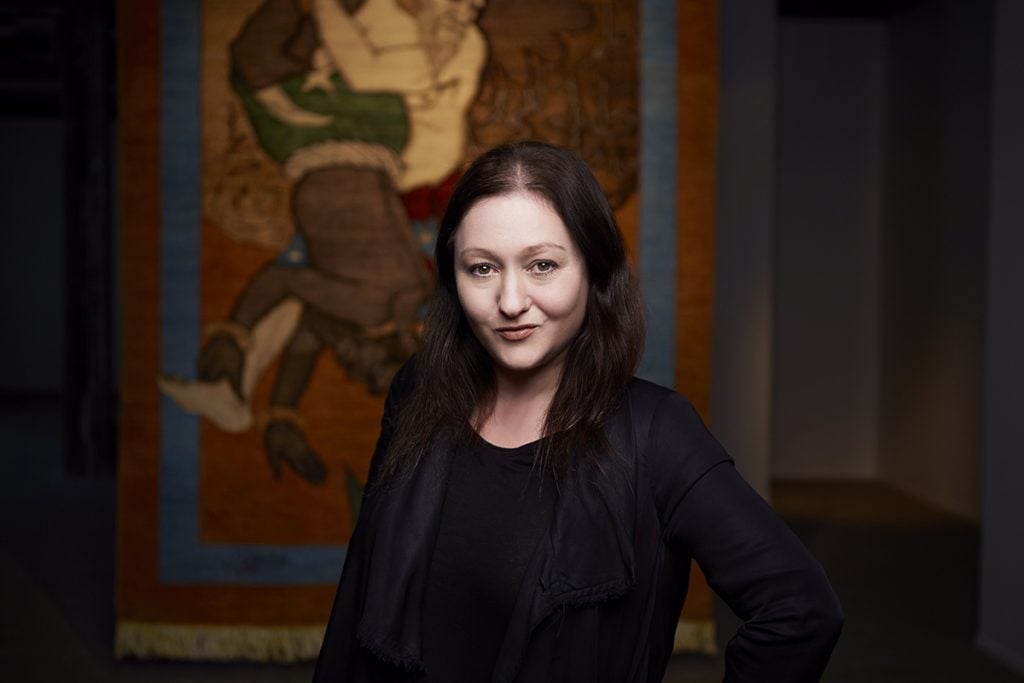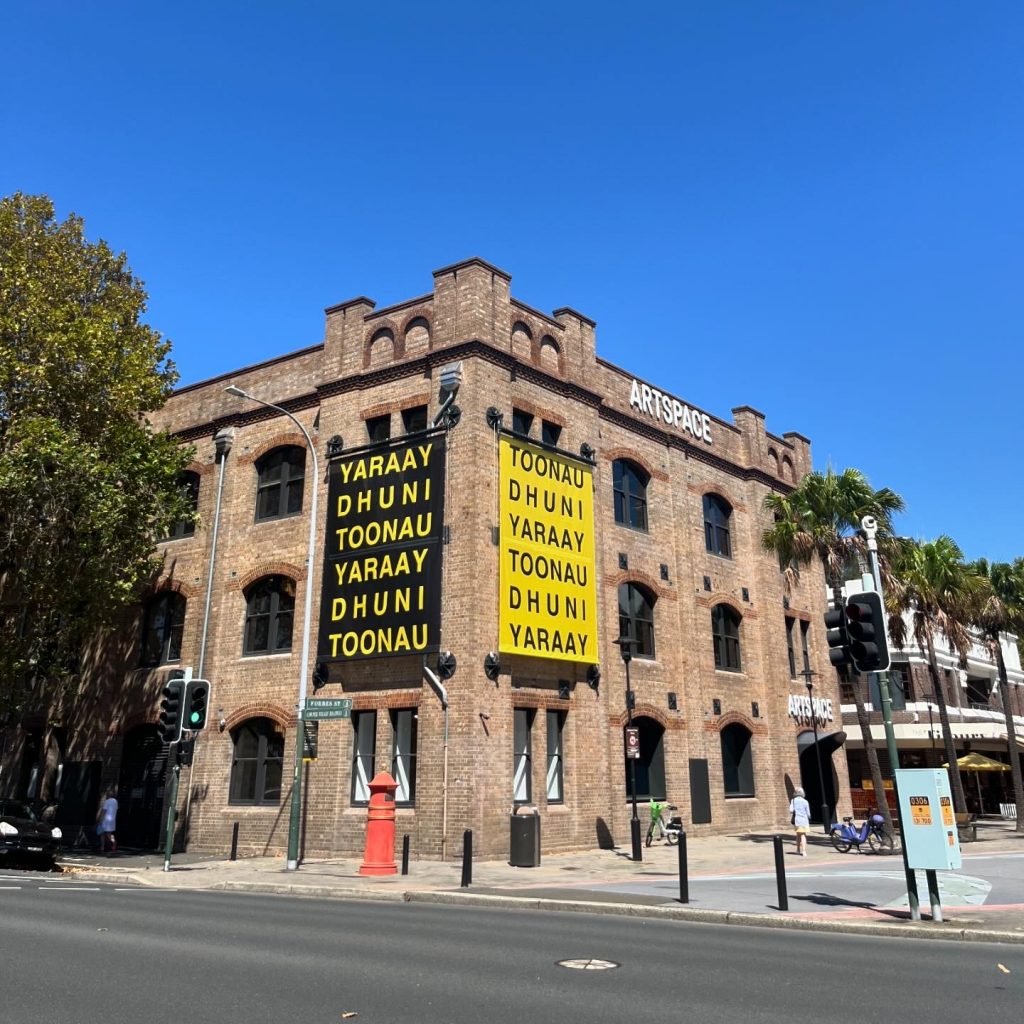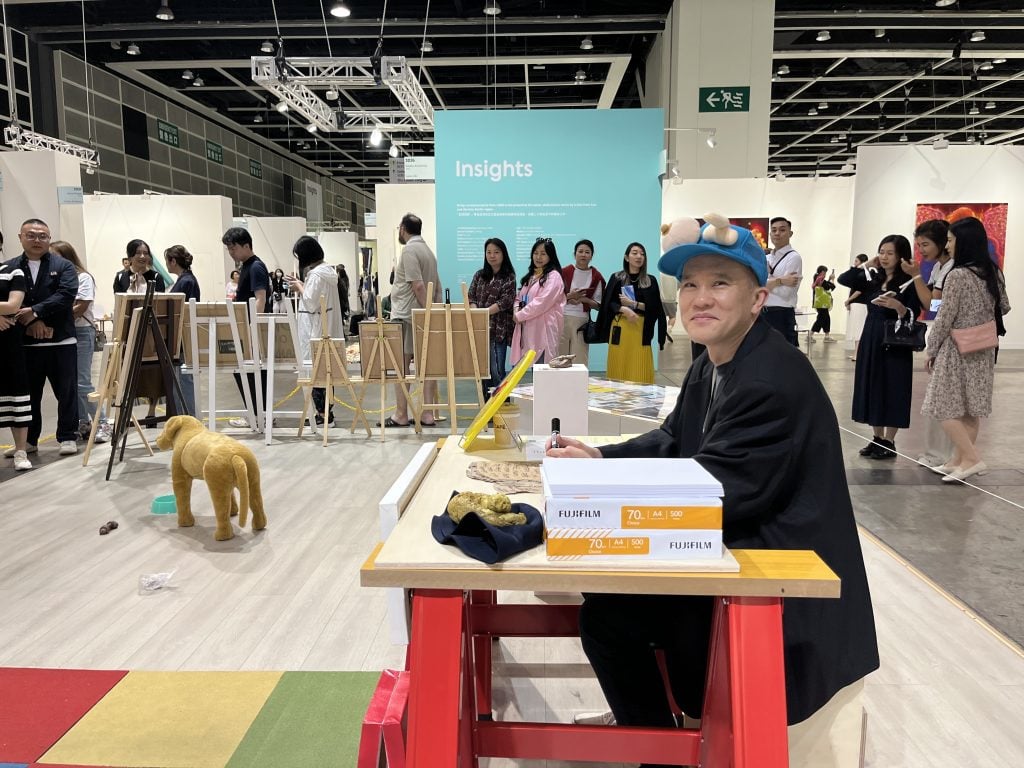Art World
‘It’s Time to Pass the Baton’: Curator Alexie Glass-Kantor Departs Sydney’s Artspace
Glass-Kantor will also curate her final Encounters section at Art Basel Hong Kong in 2025.

Glass-Kantor will also curate her final Encounters section at Art Basel Hong Kong in 2025.

Vivienne Chow

Renowned Australian curator Alexie Glass-Kantor will step down from her role as executive director of Sydney’s Artspace as well as curator of Art Basel Hong Kong’s Encounters, marking the end of an era in the Asia-Pacific art world. Her leadership in these two roles has played an instrumental part in shaping the region’s art scene.
Glass-Kantor has served in the director role at Artspace for a decade, during which time she led the organization through a major reopening, following a multimillion-dollar redevelopment that secured its future for the next 35 years. She will leave the post in mid-September.
Since 2015, she has also curated Art Basel Hong Kong’s Encounters, a well-regarded fair sector featuring large-scale works; the 2025 edition will be her last.
According to the accomplished curator, the two positions were “tough to give up,” but she has decided that it is time to explore new opportunities and to pass the baton to the next generation.
“I did not intend to spend a decade in both of these roles when I accepted them,” she said in a video call from Sydney. “But once you have accomplished what you set out to achieve, it is important to be a little bit brave and to know when it is time for renewal, for new leadership, and for new growth.”
She added that as “scary” as it might be to take the leap, “it is exciting.”

Artist r e a’s banners on the facades of Artspace during Biennale of Sydney 2024. Courtesy of Alexie Glass-Kantor.
Reflecting on her work over the past decade, Glass-Kantor said she was very proud of what she has achieved for Artspace and her other projects, including Art Basel Hong Kong. She became the executive director of Artspace in 2014 and transformed the center into “a multi-platform programming institution that supports both the presentation and production of contemporary art,” steering away from the monographic exhibitions and publications it had previously been known for.
In December last year, she re-opened Artspace after a nearly three-year redevelopment in the midst of the lockdown while securing the future of the Australia’s publicly funded contemporary art center by keeping its home at the heritage-listed The Gunnery in Woolloomooloo with a new lease that will last for 35 years. Artspace also took over the entire three-story building so that it can offer 10 rent-free artist studios as well as expanded spaces for exhibitions, performances, and research activities.
Andrew Cameron, the former chairman of the Artspace board, who worked closely with Glass-Kantor on the institution’s redevelopment, praised her vision for Artspace “to be a leading kunsthalle in the Asia-Pacific region.” He add that her contribution to the cultural life of Sydney and Australia through her “ambitious programming and fearless leadership style” makes her “an outstanding role model” for future generations of creatives and cultural leaders in Australia and across the region.

Japanese artist Ken Kagami at Art Basel Hong Kong’s Encounters 2024. Courtesy of Alexie Glass-Kantor.
Glass-Kantor also involved herself in many boards and juries as well as other projects that have helped to foster Artspace and Australia’s connections with the global art world. In addition to curating Encounters for Art Basel Hong Kong, she was involved in co-commissioning the 2021 exhibition “Jonathan Jones: untitled (transcriptions of country)” with Palais de Tokyo in Paris, and the show returned to Australia to inaugurate the revamped Artspace.
Other highlights include “Taloi Havini: Reclamation” at Dhaka Art Summit (2020), “Angelica Mesiti: Relay League” at Art Sonje Center in Seoul (2019), and “Helen Johnson” at the Institute for Contemporary Art in London (2017). She was also the curator of artist Marco Fusinato’s exhibition at the Australian pavilion for the 59th Venice Biennale in 2022.
Among the forward-thinking projects Glass-Kantor has conceived are “52 Artists 52 Actions,” which brought together artists from diverse cultural backgrounds and ethnicities from across the Asia-Pacific region, each of whom responded to the contemporary world through digital media. Another standout initiative was the 2021 project “UN/LEARNING AUSTRALIA” at Seoul Museum of Art.

Marco Fusinato’s DESASTRES at the Australian Pavilion at the 59th Venice Biennale 2022, curated by Alexie Glass-Kantor. Courtesy of Alexie Glass-Kantor.
“[It was] a survey of history and art that we curated during the hardest lockdown periods of 2020 and 2021, featuring 35 artists from across remote and urban regional Australia,” Glass-Kantor recalled. The show has a lasting impact on her as it inspired her to rethink the meaning of cultural leadership and reflecting her past decade of her career.
“[I want to] be mindful and aware of how things are shifting around us, and to maintain a sense of accountability,” she said, noting the dramatic paradigm shift the world has experienced over the past 10 years. She added that it is important for institutions and organizations to to shift perspectives “so that we can provide space for different ways of thinking.”
“Cultural leadership, for me, requires an ability to not be fixed, and always to not fix yourself too closely to one position, one institution, one identity, one role, but to be open to the fact that you have to keep moving like artists,” she said. “The mission and vision for Artspace during my leadership has been ever changing, ever challenging, and that’s to remind ourselves that contemporary art spaces exist to be spaces for experimentation and for risk.”
What is the biggest takeaway from her decade-long journey? “I have really learned a lot from both of those [Artspace and Art Basel Hong Kong] and after 10 years, I realize it’s time for a new generation to curate Encounters, a new generation to lead Artspace,” the curator said. “It’s time for me to take the things I’ve learned to lead different in different contexts.”
Glass-Kantor did not share what’s next for her, except that she wants to continue learning. “It is the Year of the Dragon. That provides some inspiration for me to think about,” she said. “I’ve still got another dragon in me. I’ve got other things I’d like to learn.”